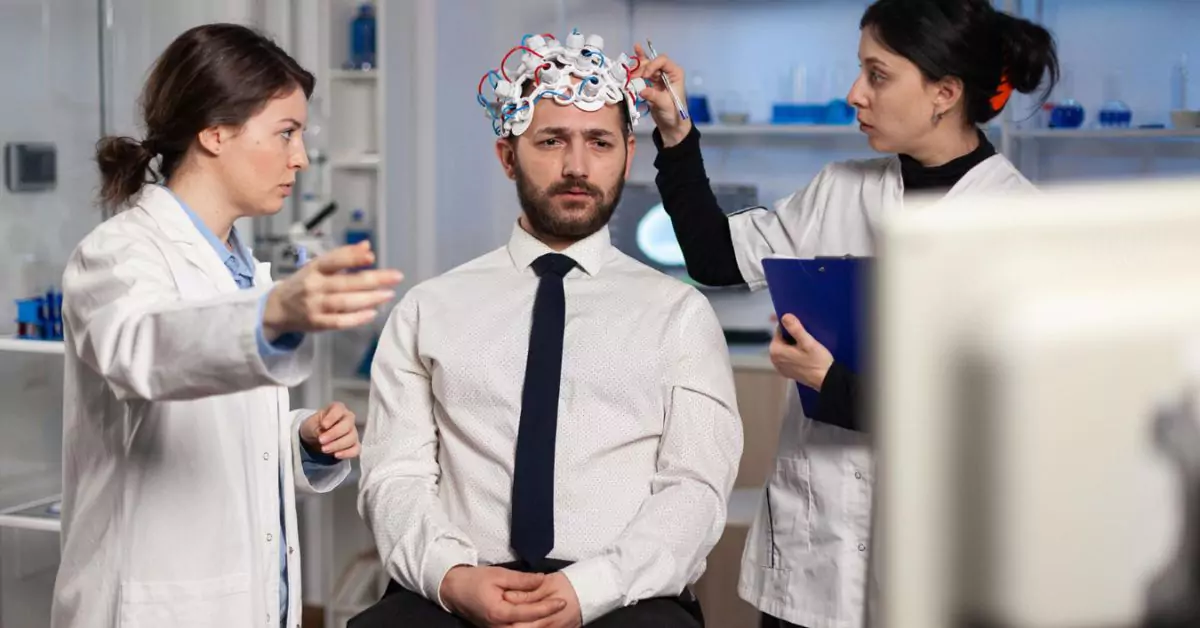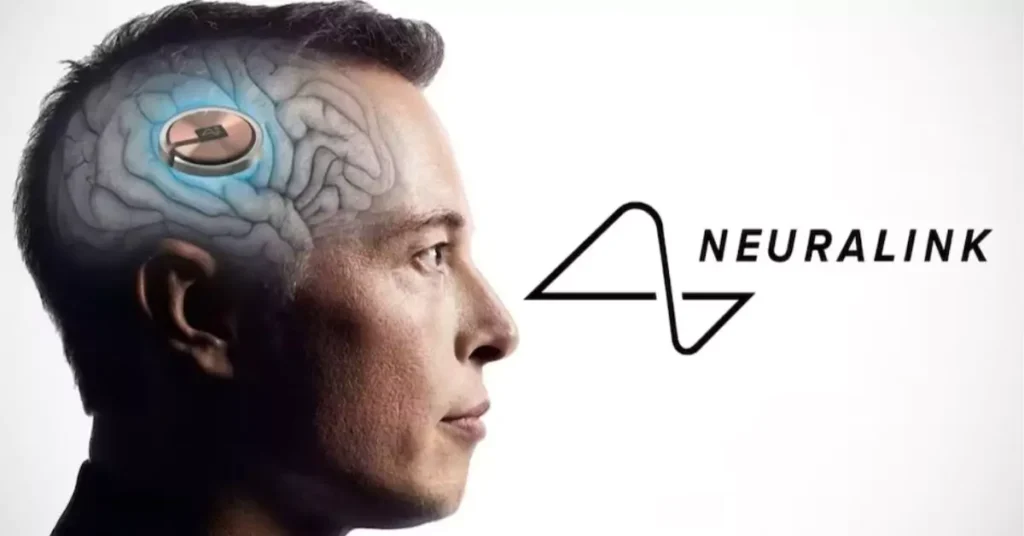
Have you heard of Neuralink? It’s a company that’s making a lot of news in the science and technology world. Neuralink is working on something called a “brain-computer interface” or BCI. This might sound like science fiction, but it’s real! A BCI is a way to connect the human brain directly to computers.
The company Neuralink was started by Elon Musk, who is known for his work with SpaceX and Tesla. Musk’s goal with Neuralink is to develop technologies that can help people in many ways, especially those with certain medical conditions.
So, what is a brain-computer interface exactly? Imagine being able to control a computer or a gadget just by thinking about it. That’s what BCI technology aims to do. It’s like creating a direct line of communication between your brain and a computer. This technology can potentially help people who have trouble moving or speaking to interact with technology more easily.

In simple terms, Neuralink is trying to build a bridge between the human brain and machines. It’s like teaching computers to understand what we’re thinking and responding to those thoughts. This idea might sound a bit scary, but it has a lot of potential to help people, especially those with certain disabilities.
So far, I’ve introduced Neuralink and explained what brain-computer interfaces are. In the next section, we’ll dive into Neuralink’s first big achievement – their first human trial.
Neuralink’s First Human Trial and Its Significance
Neuralink recently achieved something remarkable – they conducted their first human trial. This is a big milestone! In this trial, they implanted a special chip into a person’s brain. Now, you might be wondering, what’s so special about this? Well, this chip is designed to let the person control a computer mouse just by thinking about it. This is a huge step forward, especially for people who have physical limitations due to conditions like paralysis.
Imagine not being able to move your arms or speak, but still being able to use a computer just by thinking. That’s the kind of change Neuralink’s technology could bring. This first human trial is proof that their ideas are not just dreams; they’re becoming reality. The person who received this chip can now move a mouse cursor on a screen without physically touching anything. This is done through their thoughts alone.
Elon Musk, the leader of Neuralink, shared some encouraging news about this trial. He said that the patient seems to be doing well and has made a full recovery from the procedure. This is important because it shows that the technology can be used safely in humans. Musk also mentioned that they are working on improving the technology so that it can do more, like different mouse clicks and movements that are essential for better control.
This development is not just a technical achievement; it’s a ray of hope for many people. Imagine someone like the famous physicist Stephen Hawking. If he had access to this technology, he could have communicated much faster and easier. Musk himself has said that helping people like Hawking communicate more efficiently is one of their goals.
The significance of Neuralink’s first human trial is huge. It’s a step towards a future where technology can bridge gaps caused by physical disabilities. It’s not just about controlling a computer mouse; it’s about opening up new possibilities for communication and interaction with the world for those who are currently limited.
In summary, Neuralink’s first human trial is a groundbreaking achievement in the world of brain-computer interfaces. It marks a significant step towards empowering people with physical limitations and improving their quality of life.
Understanding the Chip Implanted by Neuralink
Neuralink’s breakthrough involves a tiny chip, but what does this chip actually do? How does it help people? Let’s break it down in simple terms. The chip implanted by Neuralink is no ordinary piece of technology. It’s a small device, but it has the potential to do amazing things. The primary function of this chip is to create a link between the brain and a computer. This means that the chip can pick up signals from the brain and translate them into commands that a computer can understand.
For the person with the chip, this translates to being able to control a computer without physically touching it. For example, they can move a mouse cursor on a screen just by thinking about moving it. This is possible because the chip reads the brain’s signals and sends them to the computer.
How Does the Chip Work?
To understand how the chip works, think of it like a translator between your brain and a computer. The brain sends out all kinds of signals all the time. These signals are like a special language that the computer doesn’t understand. What the Neuralink chip does is ‘listen’ to these signals and translate them into a language the computer can understand.
When the chip is implanted in the brain, it’s placed in a specific area where it can best pick up these signals. It’s connected to tiny wires that help it detect the brain’s activity. The chip then processes these signals and sends them wirelessly to a computer. This process happens very quickly, allowing real-time interaction with the computer.
Potential Benefits
The potential benefits of this technology are enormous, especially for people with certain disabilities. For someone who can’t move their arms or legs, this chip could allow them to use a computer, write messages, or even control devices in their home. It’s not just about convenience; it’s about giving people a level of independence that they might not have otherwise.
Neuralink’s chip could also help in medical research. By understanding how the brain communicates, scientists could learn more about various neurological conditions and potentially find new treatments.
Ethical Considerations, Health Concerns, and Public Reaction
As we dive into the world of advanced technology like Neuralink’s brain chip, it’s important to talk about the ethical considerations, health concerns, and how the public is reacting to these developments. Whenever a new technology, especially one as groundbreaking as a brain chip, comes into the picture, it raises a lot of ethical questions. One major concern is about the safety and well-being of the people who use these chips. There are questions about what might happen if something goes wrong with the chip, or if it affects the brain in unexpected ways.
Another ethical concern is about the privacy and security of the data that the chip collects. Since the chip reads thoughts that are then translated into computer commands, there’s a worry about who has access to this information and how it might be used.
Experts also debate the long-term impacts of such technology on society. For instance, could it lead to a situation where only some people can afford these advancements, creating a bigger gap between different groups of people?
Health Concerns Related to the Brain Chip
When it comes to health concerns, there are a few important things to consider. First, there’s the risk involved in the surgical procedure to implant the chip. Any time you have surgery, especially on something as delicate as the brain, there are risks involved. These can include infection, damage to brain tissue, and other complications.
Once the chip is in place, there are concerns about how the body will react to it over time. Will the brain accept the chip, or could there be issues like inflammation or rejection? Also, as the technology is still new, the long-term effects of having a chip in the brain are not fully understood.
Public Reaction and Expert Opinions
Public reaction to Neuralink’s technology has been a mix of excitement and concern. Some people are amazed at the potential benefits, especially for individuals with disabilities. The idea that someone could regain some independence through this technology is truly inspiring.
On the other hand, there’s apprehension about moving too fast with a technology we don’t fully understand yet. People are concerned about the ethical and health implications. There’s a call for more transparency from companies like Neuralink, especially regarding their research methods and the results of their trials.
Experts in the field have also weighed in. Some are optimistic about the potential, while others urge caution. They stress the importance of rigorous testing and ethical considerations. For instance, there have been discussions about the need for strict regulations to ensure the safety and privacy of those using the technology.
In their blog, Arthur Caplan and Jonathan Moreno, renowned ethics professors, have expressed concerns about the lack of independent information when a company funds its own experiments, especially when there’s a lot of money involved.
Looking Ahead
As we look towards the future of technologies like Neuralink’s brain chip, it’s clear that there’s a delicate balance to be maintained. The excitement of technological advancement must be tempered with careful consideration of ethical, health, and societal implications.
Comparison with Competitors and Alternative Approaches (400 words)
Neuralink is not the only company working on brain-computer interface technology. There are other players in the field, like Synchron, who are also making significant strides. Understanding these different approaches gives us a broader view of the advancements in this area.
Neuralink vs. Synchron: Different Approaches
While Neuralink’s approach involves implanting a chip directly into the brain, Synchron is taking a slightly different path. Synchron’s method is less invasive. Instead of a chip that goes into the brain, they use a device that is inserted through the blood vessels. This method avoids open-brain surgery, which can be riskier and more invasive.
Both companies aim to help people with severe paralysis or other conditions that limit their ability to move or communicate. However, the way they are trying to solve these problems is quite different.
Advancements by Synchron
Synchron has also shown promising results. Their technology allows users to perform everyday tasks like sending texts and emails just by thinking. This is a big deal because it shows that there are different ways to achieve the goal of brain-computer communication.
The less invasive nature of Synchron’s approach could make it more accessible and possibly safer for a broader range of people. It’s important in the medical field to have options, as what works for one person may not work for another.
The Importance of Diverse Approaches
The fact that companies like Neuralink and Synchron are taking different paths to achieve similar goals is a good thing. It means that the field of brain-computer interfaces is growing and diversifying. Different approaches mean more research, more learning, and ultimately, more ways to help people.
Each method has its own set of challenges and benefits. While Neuralink’s chip might offer more direct communication with the brain, Synchron’s less invasive approach might be safer and easier for some patients.
The Need for Continuous Improvement
What’s clear is that both Neuralink and Synchron, along with other companies in this space, are just at the beginning. There’s a lot more research and development needed. As they progress, they will learn more about the best ways to make these technologies safe, effective, and accessible.
The Future of Neuralink and BCI
The advancements made by Neuralink and other companies in brain-computer interface technology are just the beginning. There’s a lot of potential for the future, but also many challenges that need to be addressed.
In the future, we can expect to see more sophisticated versions of these brain chips. They could become more powerful, able to understand more complex thoughts and commands. This would make them even more helpful for people with disabilities, potentially allowing them to perform a wider range of tasks independently.
There’s also the possibility of these technologies being used for other purposes, like enhancing learning or memory. However, this brings us back to ethical considerations, as we’d need to think carefully about how far we should go in using technology to change or enhance our natural abilities.
Challenges and Considerations
One of the biggest challenges will be ensuring that these technologies are safe and reliable. This means thorough testing and strict regulatory approval processes. It’s important to make sure that the benefits outweigh any risks involved.
Another challenge is accessibility. These technologies need to be affordable and available to those who need them most. It’s crucial that advancements in this field don’t just benefit a small group of people but are accessible to a wide range of individuals.
The Importance of Ethical and Open Discussions
As we move forward, it’s vital to continue having open and ethical discussions about the development of brain-computer interfaces. This includes considering the long-term impacts on individuals and society as a whole. Ensuring that these technologies are developed in a responsible and ethical manner is key.
Conclusion
Neuralink’s achievements in brain-computer interface technology are truly groundbreaking. They open up a world of possibilities for helping people with disabilities and advancing our understanding of the brain. However, with great power comes great responsibility.
We need to proceed with caution, ensuring that ethical considerations are at the forefront. It’s also important to continue researching and improving these technologies, keeping in mind the health and safety of those who will use them.
As we embrace this new frontier, let’s keep the conversation open. We should consider not just the technological possibilities, but also the ethical, health, and societal implications. What do you think about these advancements? Are they a step in the right direction, or do they raise concerns for you?

























































































































